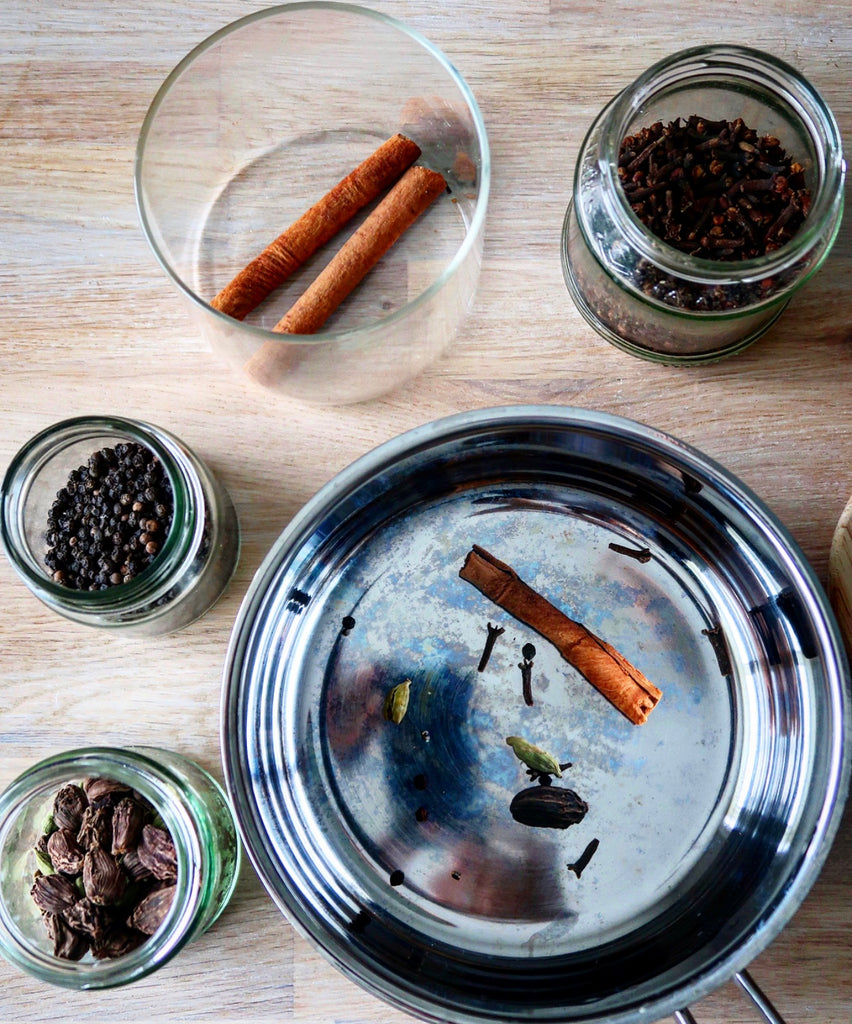Chai - The Lifeblood of India
By Claudette D'Cruz

Every now and then, I get this overwhelming feeling of gratitude for my humanity. This feeling is attributed to the fact that out of all the species on earth, humans have been chosen to be the makers and drinkers of that elixir of life - chai. Though a glass or two or three of wine might warm up my insides and enable me to relax, a cup of chai warms my soul and stashes my worries away for another day (and that day will usually involve chai too, leaving the worries with hardly a moment to bother me).
This post is an ode to the world’s second most consumed beverage (water being the first, not wine, as I mistakenly thought). It is believed that the word ‘chai’ or ‘tea’ originated from two different pronunciations in Mandarin - ‘Cha’ or ‘Te’. Hence, the words for ‘tea’ in hundreds of languages throughout our world, derive from these two different pronunciations. ‘Chai’ means ‘tea’ in Hindi (as well as in Russian, Arabic, Persian and Swahili, interestingly); ‘Cha’ in Korean and Portuguese; Caj in Croatian and Czech; and Te in Spanish, Italian, Danish and Swedish.
In India, the cup of chai has worked its way into the homes and hearts the world’s second largest populations. Every minute of every day, one of the hundreds of thousands of chai wallahs/wallis (tea vendors) across India is guaranteed to be brewing chai. Their aluminium pots externally browned by hot flames of gas and internally browned by the sacred stain of the ‘chai patti’ (tea leaves). I firmly believe that it is these men and women who drive India as a nation (and farmers too).
To me, chai is synonymous with ‘connection’ because it is always consumed in the presence of others, whether that presence be physical or emotional. When you arrive into someone’s home whether it be a friend or stranger, you are sure to be greeted with a steaming hot cup of chai which is as strong a symbol of welcome and recognition as is the traditional ‘Namaskar’ or ‘Namaaste’ (the Sanksrit greeting which translates to ‘the God within me salutes the God within you’).
Chai is a beverage of contradictions; putting us to sleep yet waking us from our slumber, settling our nerves whilst also re-energising our bodies, warming our fingertips during the cold weather and keeping us cool in summer (yes indeed, hot tea in hot, dry weather makes sense according to science. Click here for the explanation).
So how do Indians usually do chai? With milk and sugar of course! Sometimes with the addition of spices like ginger or cardamom (popularly known as ‘masala chai’). Sometimes poured from ridiculous heights to take away the initial burn to your tongue. Sometimes slurped in saucers when in a rush. In my experience of drinking chai in India, I’ve observed that the smaller the cup, the sweeter and stronger the chai. Sometimes chai is served in plastic shot glasses, its effects resembling that of much stronger, alcoholic beverages. I like my regular chai with either a simple biscuit, rusk or a plain, crumbly cake - all of which I like to dunk into my chai so as to infuse the solids and soften them so they melt in my mouth. The ‘dunking’ object should be plain in order to not disrupt the balance of flavours contained in the chai. I ain’t gonna be dunking no Tim Tams in my chai that’s for sure.
Speaking of chai, did you know that we have our very own Chai Latte spice blend? Made without any preservatives and 100% vegan just so you can be the chai wallah/walli for your loved ones and impress them with your chai-making abilities. Click here for the link to a pot-full of happiness, best shared.
Here’s to a lifetime of chai! That your life may be brewed in the reassurance of its soothing leaves, the comfort of its milk and the sweetness of taste!
